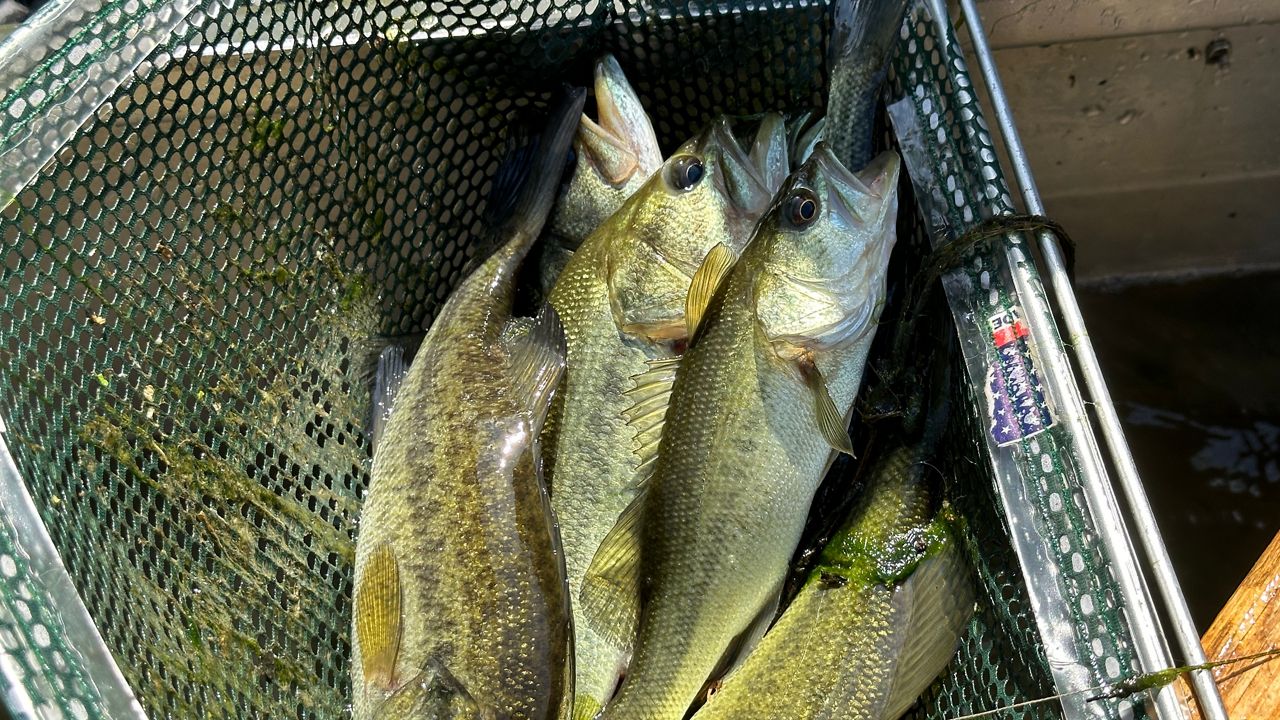LOUISVILLE, Ky. — The Kentucky Department of Fish and Wildlife is using a unique method to check in on fish populations in the commonwealth.
The department is electrofishing for largemouth bass in McNeely Lake.
“You got to be quick. Dip for its head, if you go for the tail, they’ll usually kick them away from you, but go for the head and try to get ahead of them,” said Jeff Crosby, Central Fisheries District Biologist for the Kentucky Department of Fish and Wildlife.
Crosby worked his way up through the Kentucky Department of Fish and Wildlife and now surveys lakes across the state as a biologist.
“These are the fun days, you know, being on the lake and sampling a few fish,” he said.
By using electricity produced by a generator, the fish are losing control of their swim bladders and are forced to float to the surface.
“It’s just like, you know, if you watch somebody, you know, they hit an electric fence and they kind of … lose control of their muscles; so, the same thing with the with the fish,” Crosby said.

Once they are caught, they go into a live well on the boat to be counted and measured.
Crosby said they do this to keep track of the fish population and to see how the fish looks physically.
“We just don’t want to see those major changes and you know, stocking is one way to if the population goes down that we may have to come back in it and do, which is a very rare occasion here. The other thing would be, you know, if we got too many fish, then we need to liberalize our regulations,” he said.
Crosby said the quantity of fish may be down because of the time of year they’re testing, but the quality of fish here is still pretty good.
“I think we’re a little bit behind where we need to be temperature wise. There’s a lot of pad fish on the banks right now. They’re doing their thing kind of. We’d like to have hit them a little bit before that,” he said.
In approximately 45 minutes, the biologists caught around 130 fish of all different sizes in the 51-acre lake.
“I talked about the electrofishing boat being effective in that you saw we saw a lot of fish, but it’s inefficient because what we got was a drop in a bucket of what’s here,” he said.
Once measured and accounted for, the fish are safely returned the lake.
All anglers must have a fishing license before heading out to the water. Licenses are available for purchase online or at most sporting goods stores.



